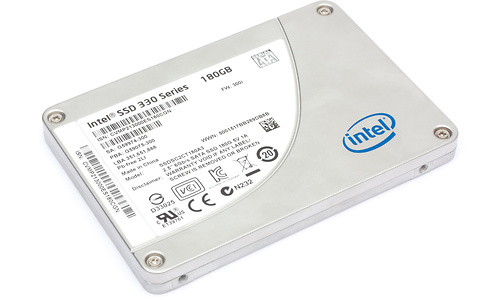
I have Intel SSD 330 Series since September 2012. In the same year Windows 8 was released. That’s a lot of water under the bridge in the world of tech.
How does this ancient SATA SSD hold up in today’s world of M.2 NVMe drives?
Intel SSD 330 Series 180GB specs:
- Capacity: 180GB (167GB available)
- Firmware: 300i
- Interface: SATA
- Age: 8.6 years
- Tech: MLC 25nm
Intel SSD 660p 2TB specs:
- Capacity: 2TB (1.86TB available)
- Firmware: 004C
- Interface: NVMe
- Age: 1.8 years
- Tech: QLC (SLC cache)
Computer specs:
- CPU: Intel Core i5 6500 3.2Ghz
- Motherboard: Gigabyte Z10-HD3P-CF
- RAM: Kingston 2x8GB DDR4 2133Mhz CL14
- GPU: Gainward GeForce GTX 1060 6GB
- PSU: EVGA SuperNOVA 750 G2 750W
- OS: Windows 10 Pro (version 2004)
Benchmarks:
- CrystalDiskMark 8.0.1
- DiskBench 2.8.1.0
- ATTO Disk Benchmark 4.01.0f1
CrystalDiskMark
Intel SSD 330 Series
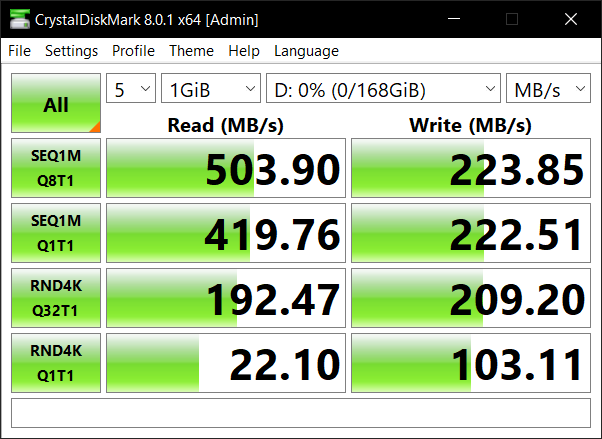
Intel SSD 660p
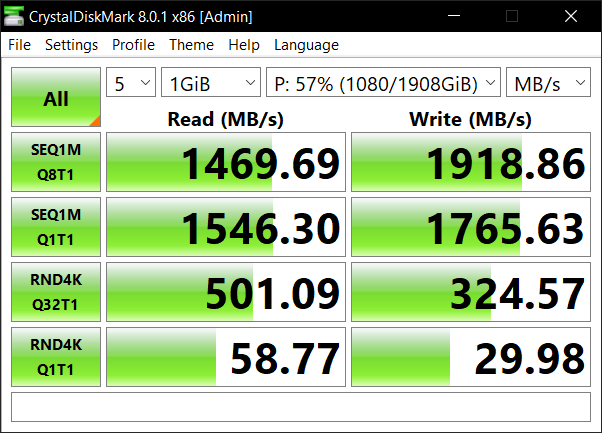
DiskBench
I’m using a custom 71GB folder with different files of various sizes (27327 files in total). Source is located on M.2 Intel 600p (my system drive).
Intel SSD 330 Series
Time: 620821 ms = 10min 20.82s
Transfer Rate: 117.651 MB/s
Intel SSD 660p
Time: 476611 ms = 7min 56.51s
Transfer Rate: 153.249 MB/s
ATTO
Intel SSD 330 Series
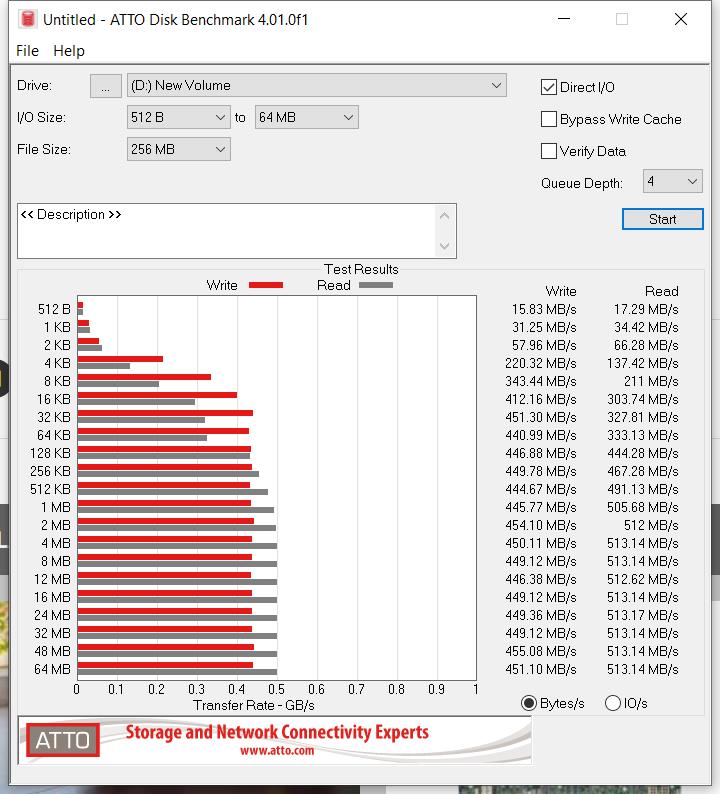
Intel SSD 660p
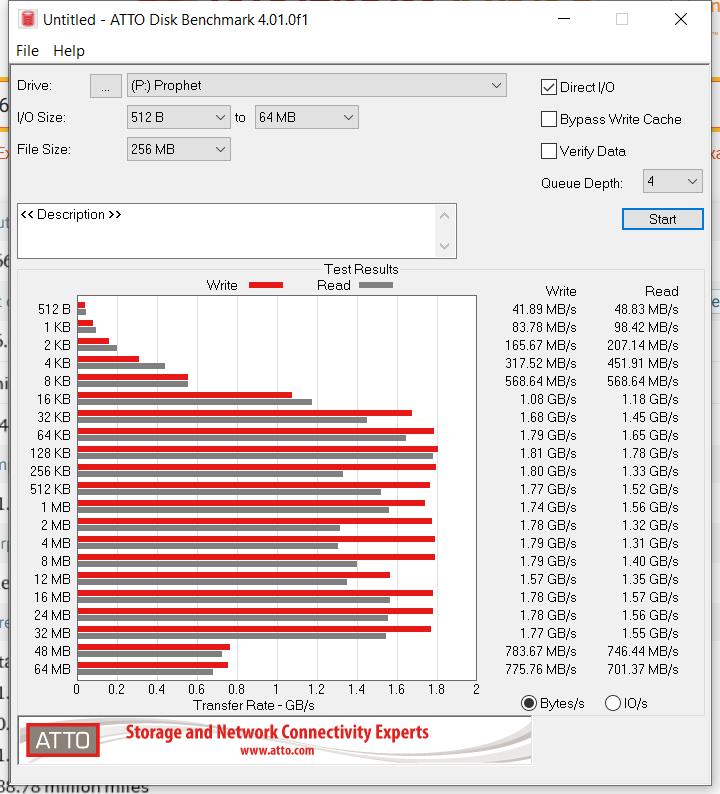
Comparison
First, a word of caution. I’m comparing against M.2 Intel 660p 2TB which contains personal data that I can’t remove. According to Intel the amount of SLC cache depends on used capacity. Here is the chart:
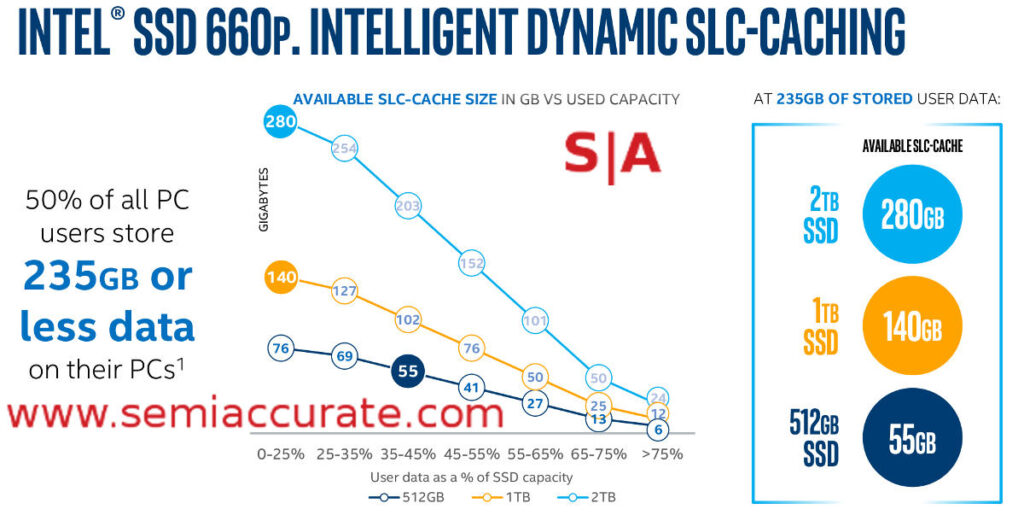
The 660p is 57% full. That corresponds with 101GB SLC-cache. I doubt any of the benchmarks exhausted the cache thus I’ve probably tested just the cache.
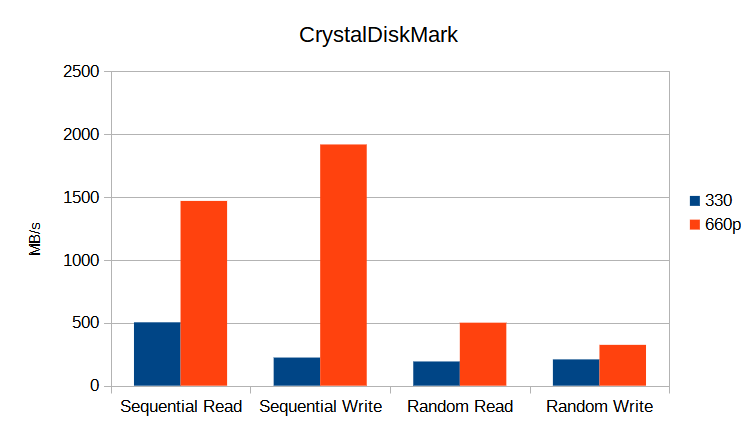
As you can see there is a massive increase in sequential speeds with 660p. Random read has more than doubled. Random write has increased slightly.
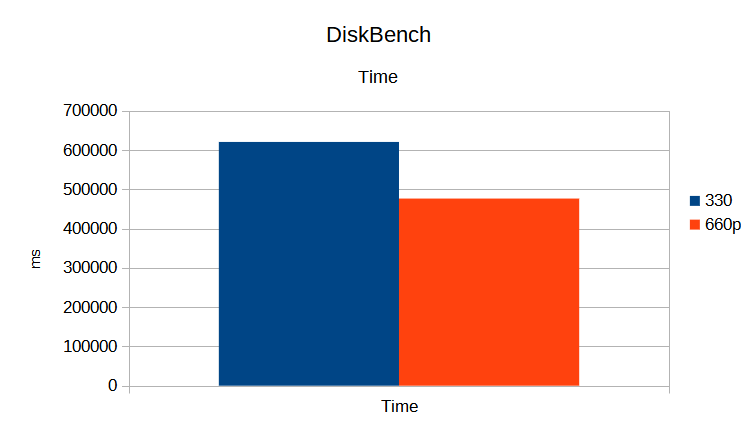
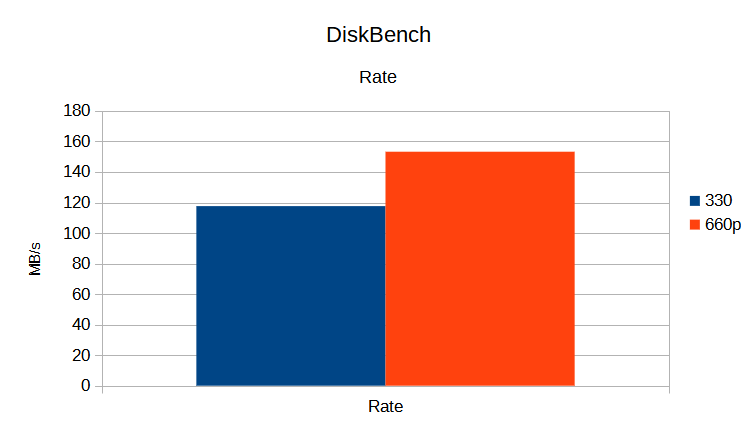
DiskBench is a real-world test and there is a 30% improvement with 660p but not as major as synthetic benchmarks. Reality is often disappointing….
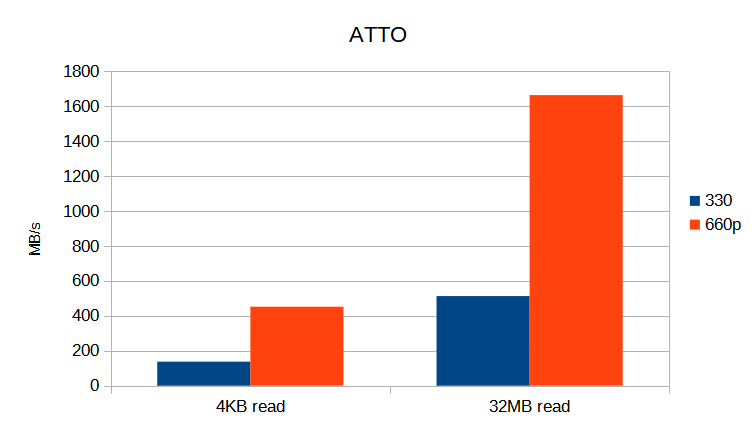
A wonderful increase in both scenarios.
Conclusion
From what I can see the newer drive (660p) is an improvement in all tests.
In synthetic benchmarks, the speeds have multiplied! It feels great to look at the numbers.
In real-world test of copying files the increase is still nice (30% is nothing to sneeze at). I haven’t tested loading times, boot times and other real-world scenarios.
To wrap it up, I’d say it’s worth it to upgrade from SATA to NVMe storage for performance gain.
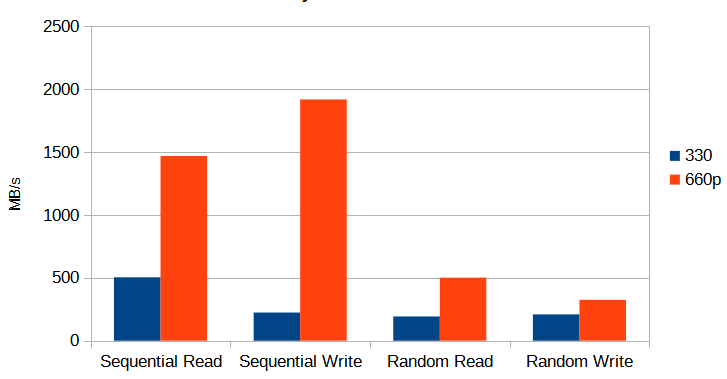
Leave a Reply